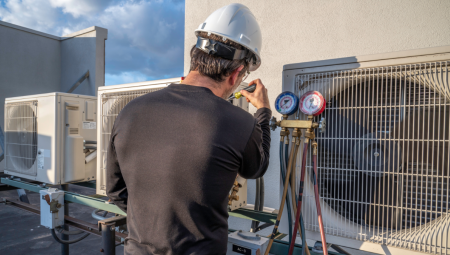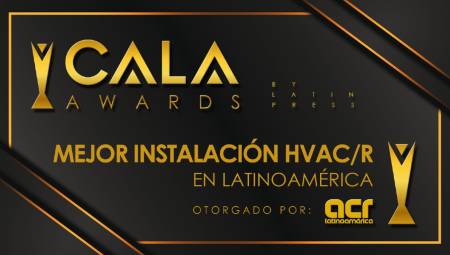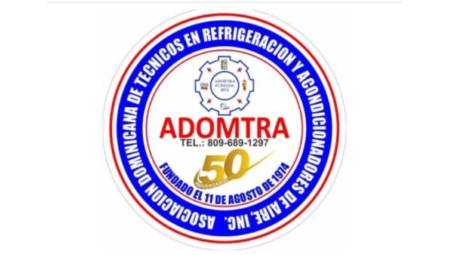 To consume a fresh ice cream with an exquisite flavor, several parameters must be closely followed in the refrigeration process. A breakdown of the cold chain causes the product to lose quality and is unfit for consumption.
To consume a fresh ice cream with an exquisite flavor, several parameters must be closely followed in the refrigeration process. A breakdown of the cold chain causes the product to lose quality and is unfit for consumption.
by Ana María Restrepo
Ice cream is one of the milk products that adults and children enjoy the most. Its beginnings date back to time immemorial, where only kings and nobles could enjoy it.
It is said that the Romans were the first to prepare sorbets based on snow, fruits and honey, however, some claim that the Chinese already mixed these products long before the birth of Christ.
It is also said that in the time of Alexander the Great, amphorae containing fruits mixed with honey were buried in the snow to better preserve them and serve them frozen. In Arabia, the chefs refined the quality and variety of these products, but it is Marco Polo who is credited with disseminating the recipe to prepare ice cream in Italy after his return from one of his trips to the Far East.
When Catherine de Medici married Henry II, ice cream arrived in France from the hand of her cook, and in this country eggs were added to the recipe. Later the ice creams were taken to England and so, little by little they were spreading in Europe to end up in America at the time of colonization.
But some questions arise... How did they keep the temperature? According to history, in the sixteenth century it was discovered that ethyl nitrate when mixed with snow produced very low temperatures; this  discovery would have its importance in the manufacture of ice cream. In 1600, the Italian Procopius created a machine that homogenized fruits, sugar and ice, resulting in a real ice cream. Then in 1846, in the United States, Nancy Jhonson, invented the first automatic ice cream maker, which laid the basis for the emergence of industrial ice cream. A few years later, in 1851, Jacobo Fussel founded the first ice cream company in the United States.
discovery would have its importance in the manufacture of ice cream. In 1600, the Italian Procopius created a machine that homogenized fruits, sugar and ice, resulting in a real ice cream. Then in 1846, in the United States, Nancy Jhonson, invented the first automatic ice cream maker, which laid the basis for the emergence of industrial ice cream. A few years later, in 1851, Jacobo Fussel founded the first ice cream company in the United States.
Today, advances in the refrigeration industry have made it possible to optimize resources to achieve artisanal and industrial ice cream manufacturing with all the essential characteristics of this delicious milk-based product. Ice cream is one of the most desired foods today, for some it is a treat and should only be included in the diet occasionally and as a dessert; for others it is a highly nutritious food and one of the triumphs of food technology.
Ice, sweet and air
Ice cream is composed of simple raw materials: milk, cream, butter (butter), purified water, fruit juice and sugars, among others that are added depending on whether the manufacture is industrial or artisanal. These raw materials must be in a refrigeration room, with a temperature of between 0 and 2 ºC, where they are kept so that they are in the best conditions to make the mixture. Mauricio Baena, general manager of Thermal Engineering, explains that these rooms have low air rotation with undemanding design conditions. When making this mixture, some manufacturers say that it must be done in a pasteurizing machine that has a heat treatment for the destruction of bacteria, at already established time and temperature conditions. An elevated temperature of between 80-85ºC is applied to this, which is quickly reduced to -4 or -6ºC, so that the pathogenic bacteria are destroyed.
Then, this mixture is homogenized, making the molecules that make up the ice cream as small as possible and that the mixture has a better body, a softer texture, smoother tissue, in addition to improving melting and storage properties. At maturation the mixture is placed at a temperature of between 4/6ºC, in this phase all the raw materials will take the characteristics of the ice cream, smell, taste, color, etc.
Mixing of raw materials
After these phases and so that the ice cream has the necessary consistency to be consumed, it is important to carry out a freezing process that is carried out in a machine called a freezer.
According to Baena, in the freezer the mixture is cooled to a desired consistency and stirred by introducing a certain amount of air under finely determined conditions. "The goal is to drive the freezing and subsequent hardening of the ice cream to get as smooth a texture as possible." When the mixture comes out of the freezer it should be between -7 -8 degrees Celsius.
At this stage, air is incorporated into the raw material to obtain a consistent, fluffy ice cream with suitable textures. Mauricio explains that this process is known as overrun and influences the formation and structure of the ice cream, making it heavier or lighter depending on the type of product, taste and country.
"To determine the refrigeration load of product in the freezing of ice cream it is necessary to know the composition of the mixture in terms of percentage of fat, sugar, stabilizers, water, etc., as well as the percentage of Overrun. Without the air, ice cream would be just milk snow," says Baena.
Consistent and hard ice cream
After the freezing process is carried out, the ice cream must be put in freezing tunnels where it is hardened. This is the most important part of the cold chain and it is here where the quality of the ice cream is determined and where the product becomes part of a freezing cold chain.
According to Mauricio Baena, this is the most demanding step in the process and as such must have high design requirements. "The construction of hardening tunnels should involve air rotations above 300 times per hour and additional should be considered a product location that allows to have the best speed coefficient around it. It is very important when determining the hardening times what is the presentation of the product, if it is in gallon of ice cream you can not have a hardening time less than six hours in a conventional tunnel, if it is presentation called impulse this would be perfectly possible. "
At the end of the hardening, when the ice cream is ready to be consumed, it is stored in cold rooms with demanding temperatures and high design parameters.
In many cases, hardening is confused with storage in the same room, something that should not be done since each process must maintain different temperatures. The storage chain requires temperatures to be well below the melting point of ice cream, which starts at approximately -18º C.
After these stages of production, the ice cream is transferred through refrigerated transport to the points of sale or distribution points. In the former, the product must be refrigerated in freezers or display refrigerators with optimal temperatures to preserve the cold chain. At the distribution points, the ice cream is stored and transported back to the points of sale in smaller vehicles but which retain the necessary parameters of -20ºC cooling.
Mauritius states that it is vitally important that the cold chain is not suspended and that the disposition and quantity of the product inside the freezer of the point of sale is ensured with a temperature range. Also in transport, it must be ensured that the lower limits of the temperature are never exceeded, which are handled with international standards.
The deliciousness of the cold
There is nothing more pleasant on a hot day than enjoying an ice cream, hard, soft, creamy, water ... but let it be an ice cream.
However, this ice cream that is enjoyed in the warmest moments depends on a number of factors to make it the best such as the quality of the raw materials, the circulation of the air and the maintenance of the cold chain. "The reality is that a bad hardening produces poor quality of the product, identified by the formation of crystals in the product by difference of stratification in the product, so the characteristic of hardening the ice cream is fundamental for there to be a good finished product" explains Baena.
The temperatures that are handled in the ice cream industry are global standards that are in different ranges depending on the process. For the conservation of raw materials, a cold level of between 0 and 2 degrees Celsius must be preserved depending on what is stored. When talking about air rotations and evaporation temperature, it must be -38 to -40ºC in order to have air temperatures of minus 34 and thus be able to obtain the necessary cold stroke, and in the conservation of ice cream, the temperature of the hottest storage room must be -23ºC.
It should be noted that the commercial chain of ice cream begins when the products pass the feezer. It can be said that after freezing and hardening, ice cream could be sold immediately, but its storage is necessary to provide better quality. In this industry refrigeration is achieved by means of ammonia and alternative refrigerants, freons, among them the most used are R507 or R404.
According to mauricio Baena's perception, refrigeration for ice cream plants in Latin America is as advanced as that of the United States or Europe, and it is in Argentina where more progress has been made in this.
World of flavors and colors
The water ice creams, typical flavors of fruits such as lemon, orange, mandarin, blackberry to those of brownie, pistachio, vanilla old style, red fruits and other more innovative as the mate, spicy wings, Cabernet and Torrontés wines, etc., make up a universe of flavor and color that offers diners the most delicious and sweet dessert, or also the most nutritious treat.
In the market there are three types of ice cream, the industrial ones whose manufacturing process requires products and materials in large quantities with less freshness, so flavorings and dyes are used to enhance the qualities of the ice cream, also the ice cream has more air.
Margarita Arango, regional manager of Calco (Compañía de alimentos colombianos S.A) Crepes and Wafles, Medellín, affirms that ice cream of industrial manufacture represents a much greater production, carried out in wide spaces and are generally produced that are marketed in the market.
The second type of ice cream, the artisanal one, is made in smaller locations and with the minimum proportion of chemicals, they do not use flavorings or preservatives, but with the maximum of natural products. "These ice creams are made with freshly milked milk, eggs and fresh fruits, with their own raw materials," explains Arango. Artisanal ice creams, which are part of artisan ice cream parlors or top-notch restaurants, have much less built-in air and a much creamier look.
On the other hand, the "soft" type ice cream is the one we call soft and is obtained just before consumption, in the same seller establishment. The base mixture is placed in a small butter machine and by pressing a tap the ice cream is extracted at the moment.
Margarita explains that artisanal production provides customers with finer ice cream with better quality, not to say that industrial ones are not manufactured under high quality standards, but that the raw materials of the former are more natural. However, he agrees with Mauricio when explaining that if the cold chain fails, the ice cream undergoes crystallization and leads to a lower quality, and although the taste is good, the structure is not adequate to be marketed.
It is mistakenly considered that ice cream is a treat that interferes with the daily diet of humans, however there are sugar-free ice creams that can be consumed by people with sugar problems, so that today dietitians and health specialists are considering it within the most nutritious dairy products.
The production of ice cream is in a period of expansion due to the high consumption that occurs in the world. Mexico is the largest consumer of ice cream from Latin America with an estimated exports reaching $24 million, followed by Canada with a range of $5.7 million, the United Kingdom with $3.6 million, Hong Kong with $2.8 million and The Bahamas with $2 million, according to data from the USDA/International Ice Cream Association.
Likewise, the most consuming countries of this product are, as of 2006, and according to the International Dairy Association, New Zealand, with 26.3 liters per year per inhabitant, followed by the United States. USA, with 24.5 liters. In Latin America, two liters per capita per year are consumed on average, in Colombia 1 to 1.3 liters and in Argentina it is three times more than in Colombia.













